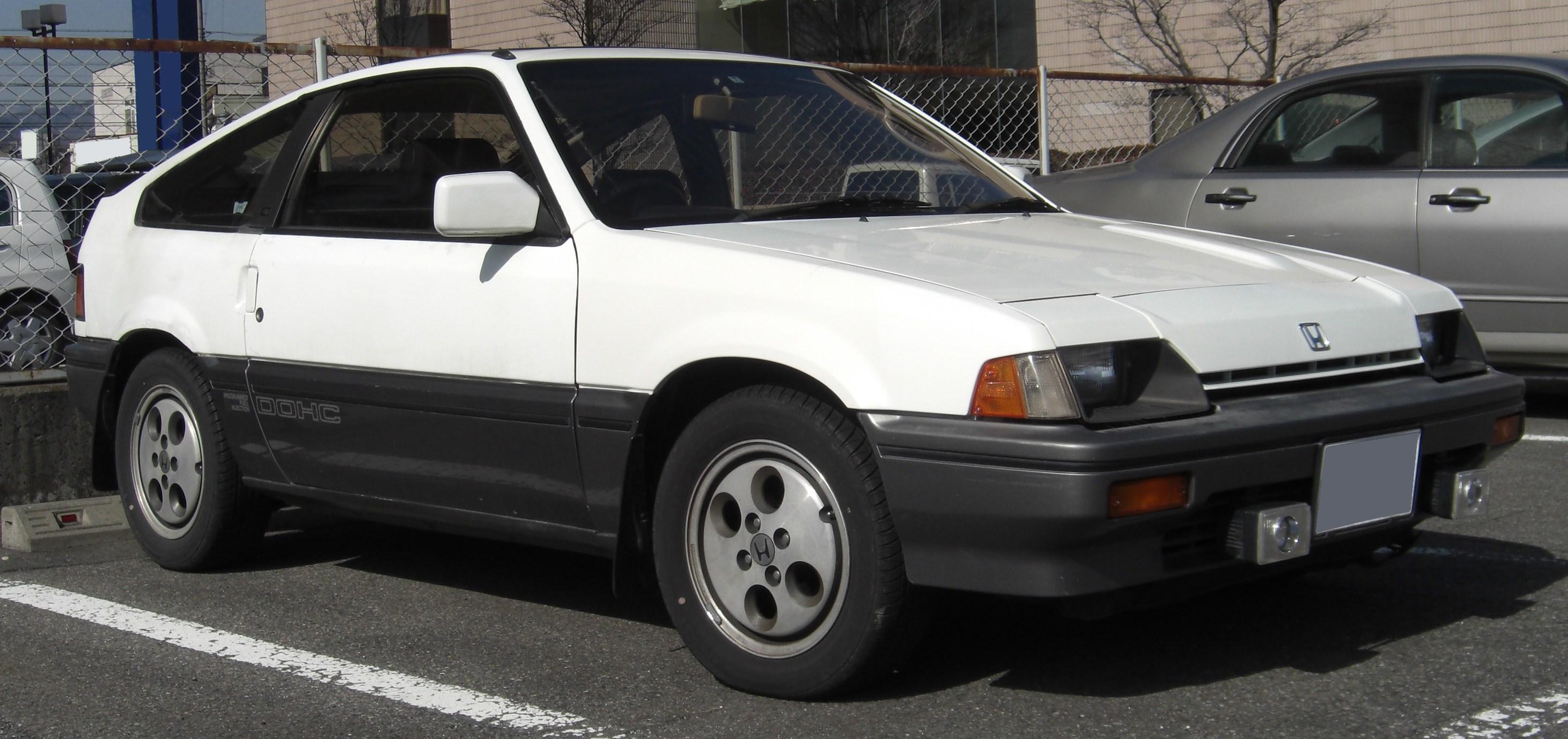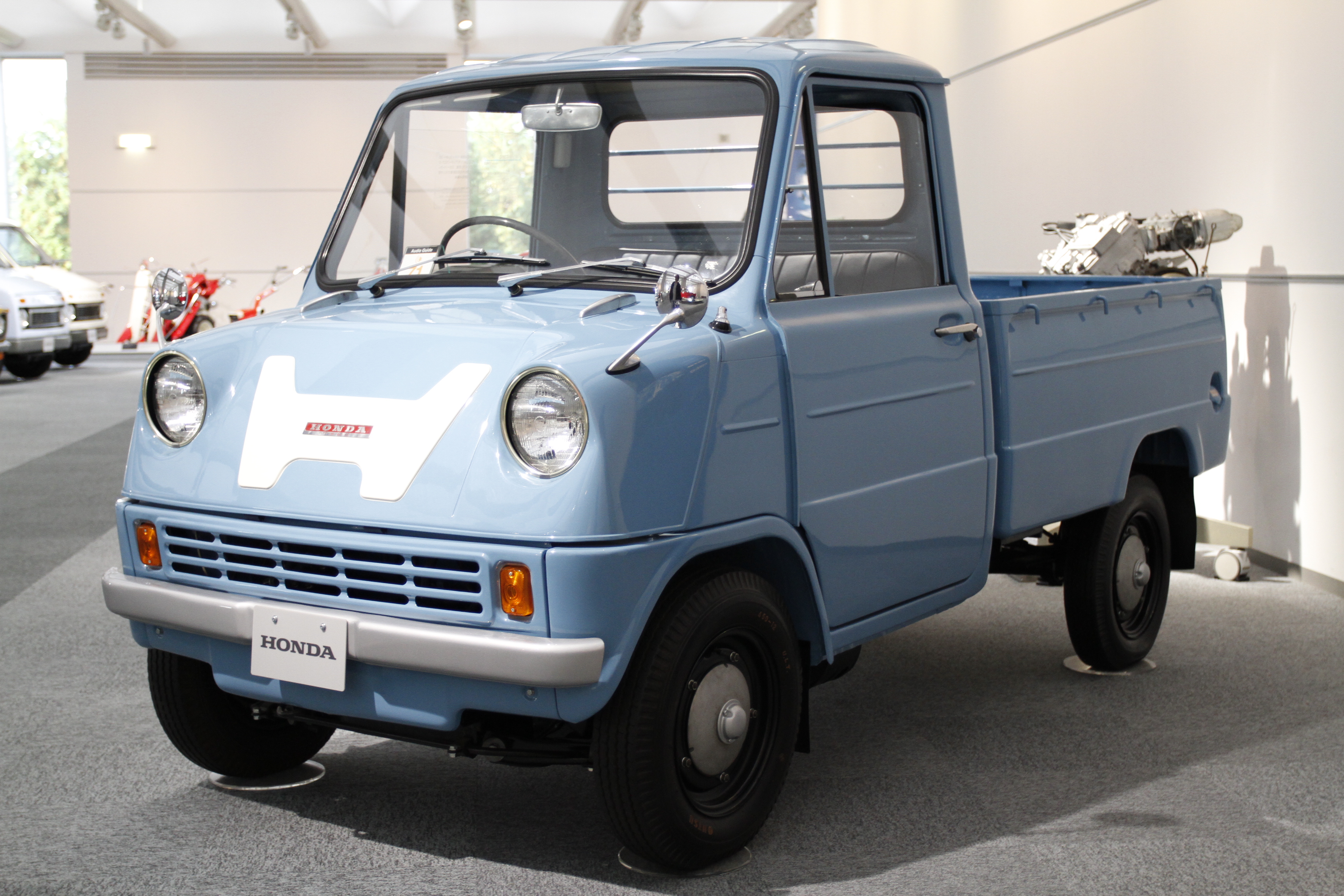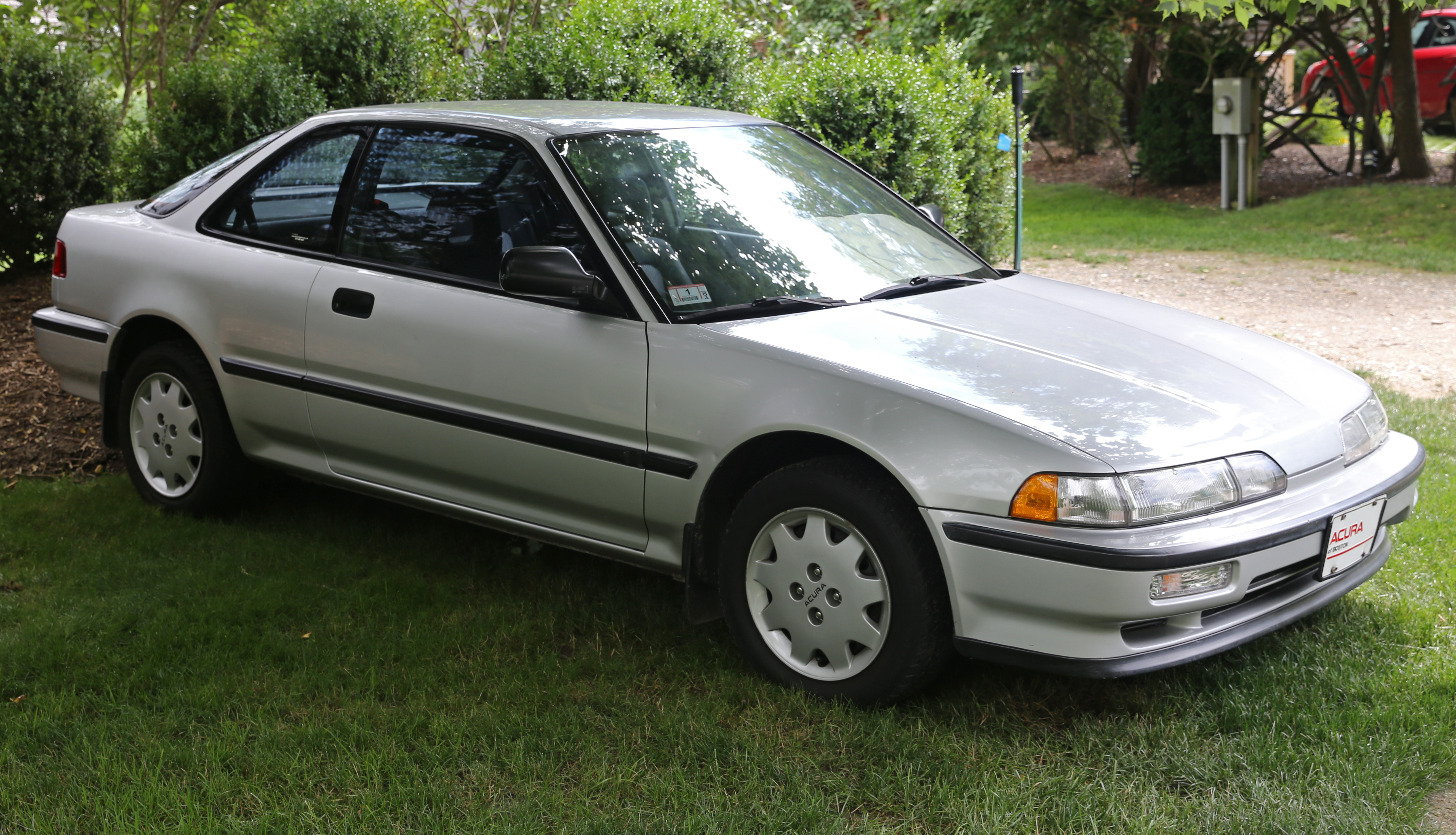|
Honda Civic (third Generation)
The third-generation Honda Civic is an automobile which was produced by Honda from 1983 until 1987. It was introduced in September 1983 for model year 1984. The Civic's wheelbase was increased by 2–5 inches (13 cm) to 93.7 inches (hatchback) or 96.5 inches (sedan). A three-door hatchback/kammback, four-door sedan (also known as the Honda Ballade), the five-door "Shuttle" station wagon, and sporting CRX coupé shared common underpinnings. This included MacPherson strut suspension with torsion bars in the front and a rear beam with coil springs. However, the body panels were largely different between models. The Civic-based Honda Quint five-door hatchback also underwent a model change, and became the Honda Quint Integra, available as both a three- and five-door fastback. The Quint Integra (soon just "Integra") was sold at the Japanese ''Honda Verno'' dealership along with the CR-X. The Civic in Japan was now exclusive to ''Honda Primo'', along with Honda's kei cars as w ... [...More Info...] [...Related Items...] OR: [Wikipedia] [Google] [Baidu] |
Honda
is a Japanese public multinational conglomerate manufacturer of automobiles, motorcycles, and power equipment, headquartered in Minato, Tokyo, Japan. Honda has been the world's largest motorcycle manufacturer since 1959, reaching a production of 400 million by the end of 2019, as well as the world's largest manufacturer of internal combustion engines measured by volume, producing more than 14 million internal combustion engines each year. Honda became the second-largest Japanese automobile manufacturer in 2001. In 2015, Honda was the eighth largest automobile manufacturer in the world. Honda was the first Japanese automobile manufacturer to release a dedicated luxury brand, Acura, in 1986. Aside from their core automobile and motorcycle businesses, Honda also manufactures garden equipment, marine engines, personal watercraft, power generators, and other products. Since 1986, Honda has been involved with artificial intelligence/robotics research and released their ASIMO rob ... [...More Info...] [...Related Items...] OR: [Wikipedia] [Google] [Baidu] |
Subcompact Car
Subcompact car is a North American classification for cars smaller than a compact car. It is broadly equivalent to the B-segment (Europe), supermini (Great Britain) or A0-class (China) classifications. According to the U.S. Environmental Protection Agency (EPA) car size class definition, the subcompact category sits between the "minicompact" and "compact" categories. The EPA definition of a subcompact is a passenger car with a combined interior and cargo volume of between . Current examples of subcompact cars are the Nissan Versa and Hyundai Accent. The smaller cars in the A-segment/city car category (such as the Chevrolet Spark and Smart Fortwo) are sometimes called subcompacts in the U.S., because the EPA's name for this smaller category — "minicompact" — is not commonly used by the general public. The prevalence of small cars in the United States increased in the 1960s due to increased imports of cars from Europe and Japan. Widespread use of the term subcompact coincide ... [...More Info...] [...Related Items...] OR: [Wikipedia] [Google] [Baidu] |
Honda E Engine
The E-series was a line of inline four-cylinder automobile engines designed and built by Honda for use in their cars in the 1970s and 1980s. These engines were notable for the use of CVCC technology, introduced in the ''ED1'' engine in the 1975 Civic, which met 1970s emissions standards without using a catalytic converter. The CVCC ''ED1'' was on the Ward's 10 Best Engines of the 20th century list. EA :''Also see the Japanese Wikipedia entry'' The EA-series is a water-cooled inline two-cylinder engine replacing the N360's air-cooled engine. An SOHC design with a timing belt (replacing the chain used in the N360 engine), the EA was first seen in the 1971 Honda Life. This engine was derived from the air-cooled engine in the Honda CB450 and was adapted for water-cooled application. The displacement was reduced to be in compliance with Japanese kei car legislation that stipulated maximum engine displacement. Bore and stroke were . A version producing at 8,000 rpm was ins ... [...More Info...] [...Related Items...] OR: [Wikipedia] [Google] [Baidu] |
Honda Integra
The , marketed in North America as the Acura Integra, is an automobile produced by the Japanese automobile manufacturer Honda from 1985 until 2006, and then since 2021. It succeeded the Quint as a more luxurious and sport-oriented derivative of the Civic. The Integra was one of the launch models for Acura in the US in 1986 alongside Acura Legend. Throughout its production run, the Integra was highly regarded for its handling and performance. The 1995–2001 Integra Type R is widely regarded as one of the best front-wheel-drive cars of all time. ''Car and Driver'' magazine named the Integra to its annual Ten Best list six times: in 1987, 1988, and 1994 through 1997. The GS-R model was called out specifically in 1994 and 1995. It made a return on the Ten Best list as the Acura RSX, in 2002 and 2003. The Integra nameplate was revived in 2021 after a 16-year hiatus. The Honda Integra nameplate is used for a restyled Honda Civic sedan for the Chinese market, while the Acura Integ ... [...More Info...] [...Related Items...] OR: [Wikipedia] [Google] [Baidu] |
Honda Quint
The Honda Quint is a subcompact car manufactured by Honda in Japan from 1980 until 1985. It was introduced in February 1980 in Japan as a five-door liftback version of the Honda Civic, being more upscale than the Civic, and was sold at the ''Honda Verno'' sales channel in Japan. The Quint was made available to export markets including Europe and Southeast Asia in 1981, with the export name being Honda Quintet. Beginning in 1983, this model was also sold in Australia as the Rover Quintet.'' Tutte le Auto del Mondo 1985'', p. 521 The Quint was succeeded by the Honda Quint Integra in 1985. The car came with a 1,602 cc four-cylinder engine which develops and of torque. This engine was coupled with a five-speed manual transmission or an optional two-speed semi- automatic with overdrive. A three-speed version of the semi-auto Hondamatic replaced this during 1982. Speed sensitive power steering (not on the base model) and fully independent suspension with MacPherson struts and f ... [...More Info...] [...Related Items...] OR: [Wikipedia] [Google] [Baidu] |
Honda Ballade
The Honda Ballade is a subcompact automobile built by Honda of Japan. It began as a four-door higher equipment content version of the Civic in 1980. The Ballade was developed at the same time the Honda Vigor appeared, which was a higher content Honda Accord. In Japan, the Ballade was sold exclusively at ''Honda Verno'' dealerships alongside the Vigor, Prelude, CR-X, and Quint. In the UK it was launched at the same time as the very similar Triumph Acclaim with which it shared a Honda-built engine. History The name of the car was taken from "ballade", the French word for a ballad. Because both the four-door Ballade sedan and the five-door hatchback Quintet were both high luxury content vehicles derived from the Honda Civic, the Ballade represented a type of music, and the Quintet represented a musical group. The Ballade competed in Japan with the Toyota Sprinter, and the Nissan Laurel Spirit as the Civic competed with the Corolla, and the Sunny. It was launched in September 198 ... [...More Info...] [...Related Items...] OR: [Wikipedia] [Google] [Baidu] |
Honda CR-X
The Honda CR-X (styled in some markets as Honda CRX), originally launched as the Honda Ballade Sports CR-X in Japan, is a front-wheel-drive sport compact car manufactured by Honda from 1983 until 1991. The first generation CRX was marketed in some regions outside Japan as the Honda Civic CRX. Although there are many supposed definitions for the acronym CR-X, the most widely accepted is "Civic Renaissance Experimental". In the U.S., the CRX was marketed as an economy sport Kammback with room for two passengers while Japanese and European market cars came with a 2+2 seating arrangement. Redesigned for the 1988 model year and produced until 1991, the CRX was popular for its performance, nimble handling, and good fuel economy. The CR-X was replaced by Honda's CR-X del Sol and was marketed as a CR-X in some markets. __TOC__ First generation Overview In 1983 for the 1984 model year, Honda introduced an all-new two-seater that shared the drivetrain with the Civic but offered u ... [...More Info...] [...Related Items...] OR: [Wikipedia] [Google] [Baidu] |
Rover 200
The Rover 200 Series, and later the Rover 25, are a series of small family cars that were produced by British manufacturer Rover (marque), Rover from 1984 until 2005. There have been three distinct generations of the Rover 200. The first generation was a four-door saloon car based on the Honda Ballade. The second generation was available in three or five-door hatchback forms, as well a coupé and cabriolet (in relatively small numbers). Its sister model, the Honda Concerto was built on the same production line in Rover's Longbridge factory. The final generation was developed independently by Rover on the automotive platform, platform of its predecessor, and was available as a three or five-door hatchback. Just before BMW's sale of Rover in 2000, and following a facelift, the model was renamed and sold as the Rover 25, and the MG ZR was based on the Rover 25 with mechanical changes to the suspension. Production ceased in 2005 when MG Rover went into Administration (insolvency), a ... [...More Info...] [...Related Items...] OR: [Wikipedia] [Google] [Baidu] |
Front-engine, Four-wheel-drive Layout
In automotive design, an F4, or front-engine, four-wheel drive (4WD) layout places the internal combustion engine at the front of the vehicle and drives all four roadwheels. This layout is typically chosen for better control on many surfaces, and is an important part of rally racing, as well as off-road driving. In terms of racing purposes, whether it be on-road or off-road, can be described as follows, A team that pursues the Weak LS4WD architecture will minimize the development cost of the front-wheel drive system at the expense of having a larger rear powertrain. The Weak architecture produces a vehicle with a large powersplit between the front and rear powertrains, while the Strong architecture recommends a vehicle with more similar power and torque requirements for the front and rear. Most four-wheel-drive layouts are front-engined and are derivatives of earlier front-engine, rear-wheel drive, or front-engine, front-wheel drive designs. The first origins of it were int ... [...More Info...] [...Related Items...] OR: [Wikipedia] [Google] [Baidu] |
Front-engine, Front-wheel-drive Layout
In automotive design, a front-engine, front-wheel-drive (FWD) layout, or FF layout, places both the internal combustion engine and driven roadwheels at the front of the vehicle. Usage implications Historically, this designation was used regardless of whether the entire engine was behind the front axle line. In recent times, the manufacturers of some cars have added to the designation with the term '' front-mid'' which describes a car in which the engine is in front of the passenger compartment but behind the front axle. The engine positions of most pre– World-War-II cars are ''front-mid'' or on the front axle. This layout is the most traditional form and remains a popular, practical design. The engine, which takes up a great deal of space, is packaged in a location passengers and luggage typically would not use. The main deficit is weight distribution—the heaviest component is at one end of the vehicle. Car handling is not ideal, but usually predictable. In contrast wit ... [...More Info...] [...Related Items...] OR: [Wikipedia] [Google] [Baidu] |
Station Wagon
A station wagon ( US, also wagon) or estate car ( UK, also estate), is an automotive body-style variant of a sedan/saloon with its roof extended rearward over a shared passenger/cargo volume with access at the back via a third or fifth door (the liftgate or tailgate), instead of a trunk/boot lid. The body style transforms a standard three-box design into a two-box design — to include an A, B, and C-pillar, as well as a D-pillar. Station wagons can flexibly reconfigure their interior volume via fold-down rear seats to prioritize either passenger or cargo volume. The ''American Heritage Dictionary'' defines a station wagon as "an automobile with one or more rows of folding or removable seats behind the driver and no luggage compartment but an area behind the seats into which suitcases, parcels, etc., can be loaded through a tailgate." When a model range includes multiple body styles, such as sedan, hatchback, and station wagon, the models typically share their platform, d ... [...More Info...] [...Related Items...] OR: [Wikipedia] [Google] [Baidu] |
Sedan (automobile)
A sedan or saloon (British English) is a automobile, passenger car in a three-box styling, three-box configuration with separate compartments for an engine, passengers, and cargo. The first recorded use of the word "sedan" in reference to an automobile body occurred in 1912. The name derives from the 17th-century Litter (vehicle), litter known as a sedan chair, a one-person enclosed box with windows and carried by porters. Variations of the sedan style include the close-coupled sedan, club sedan, convertible sedan, fastback sedan, hardtop sedan, notchback sedan, and sedanet/sedanette. Definition A sedan () is a car with a closed body (i.e. a fixed metal roof) with the engine, passengers, and cargo in separate compartments. This broad definition does not differentiate sedans from various other car body styles, but in practice, the typical characteristics of sedans are: * a Pillar (car), B-pillar (between the front and rear windows) that supports the roof * two rows of seats ... [...More Info...] [...Related Items...] OR: [Wikipedia] [Google] [Baidu] |




_(800px).jpg)




